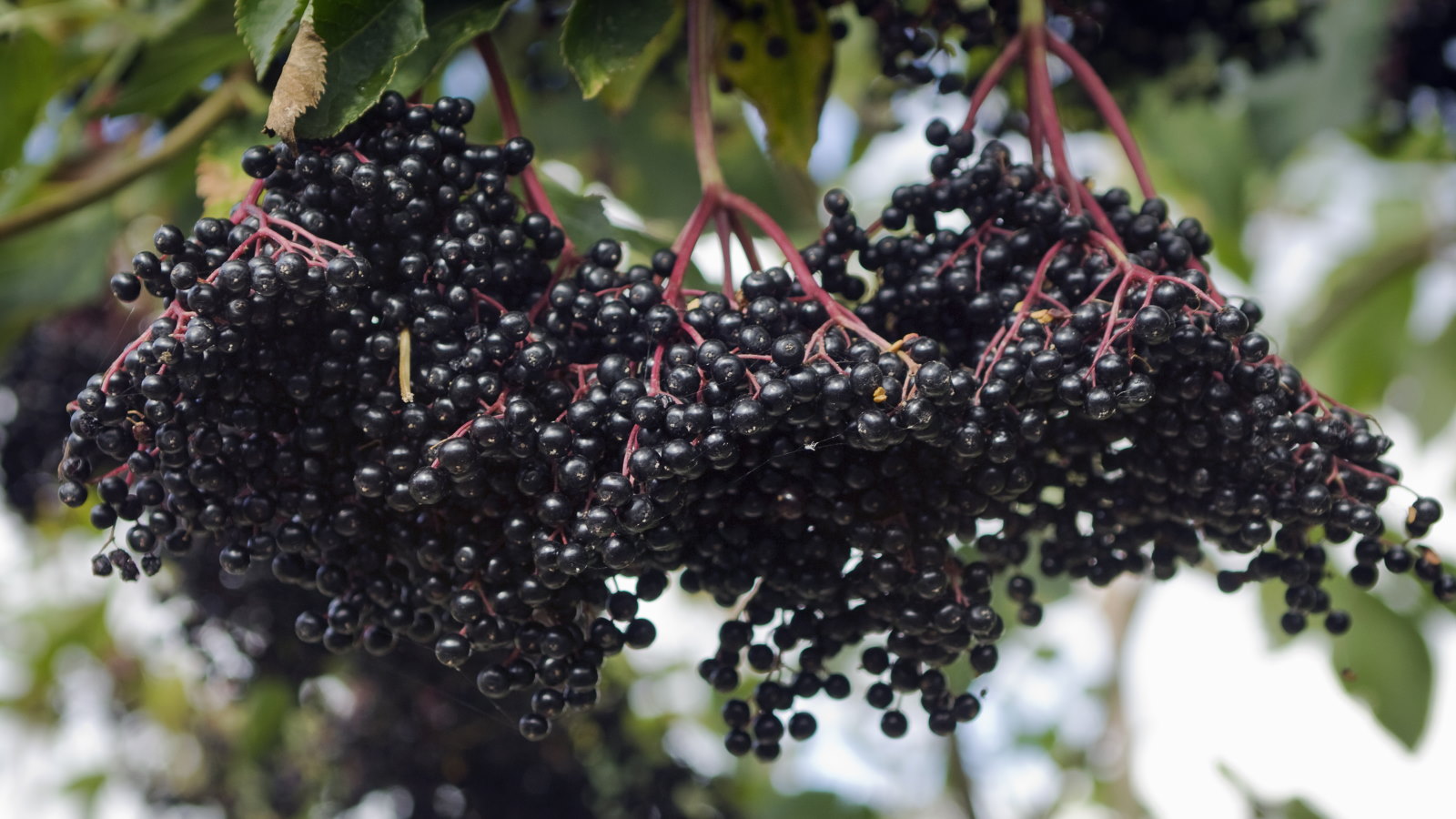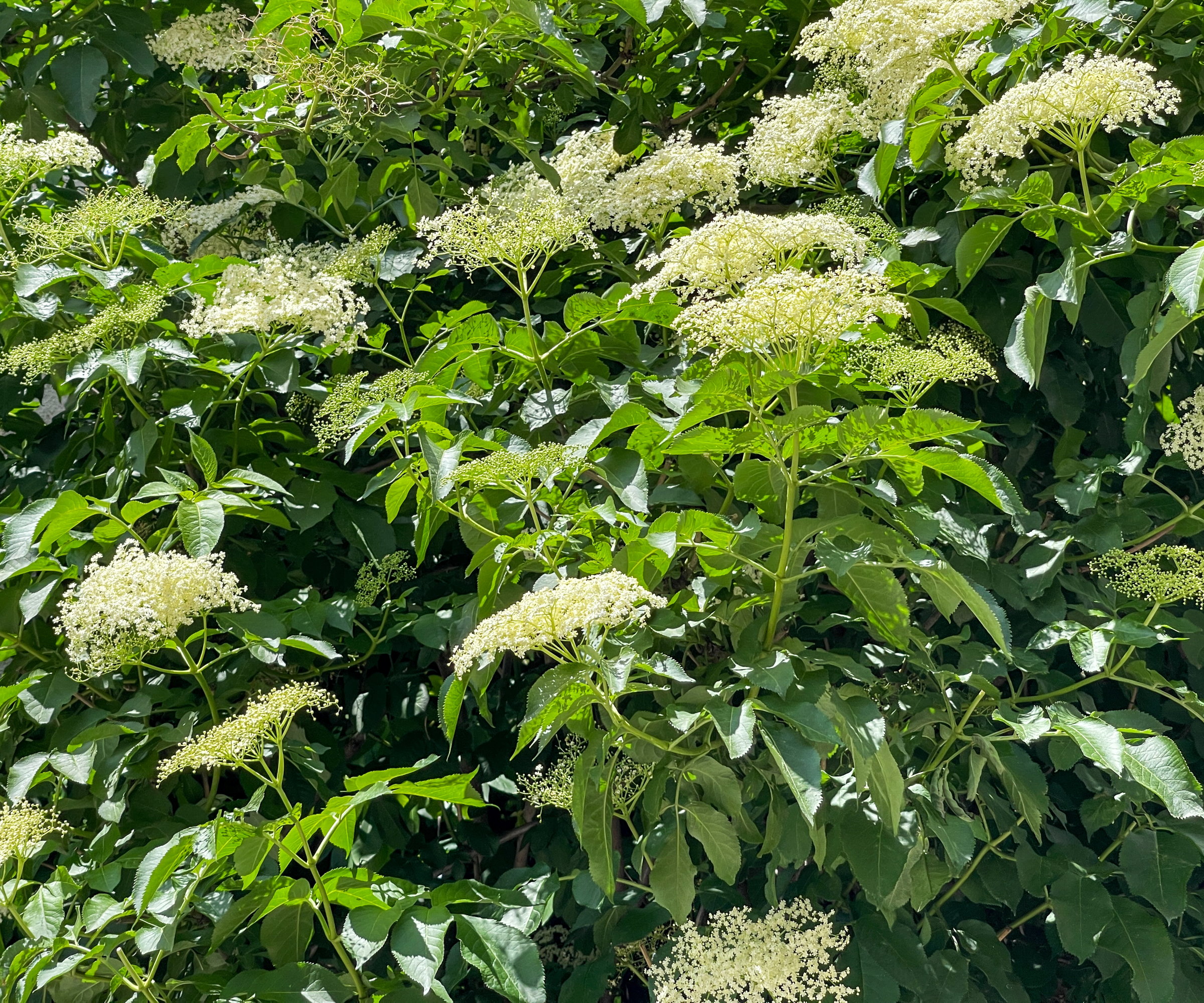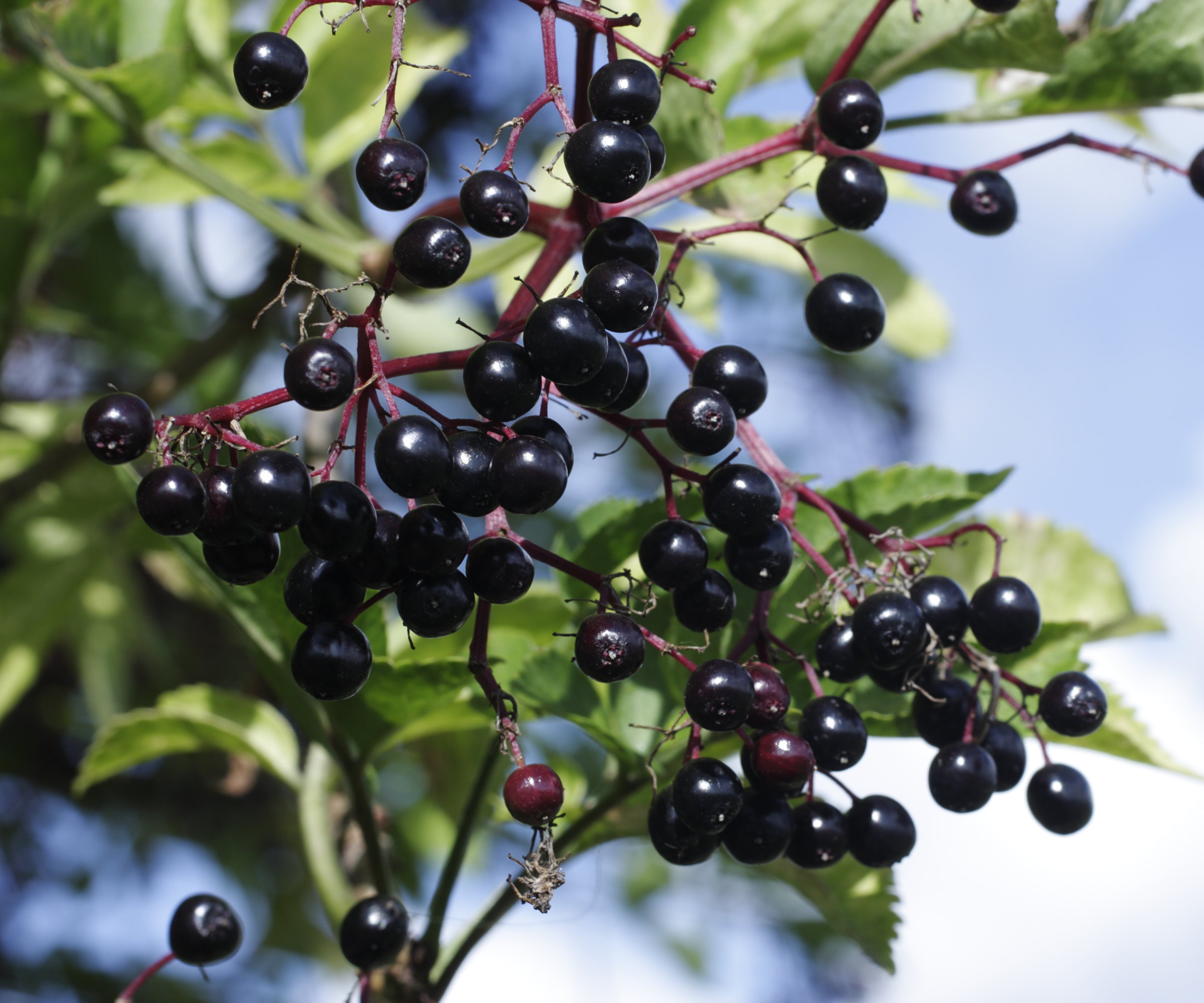
Knowing when and how to prune elderberry ensures the deciduous shrub always looks its best and is smothered in flowers and berries year after year.
The shrubs are very fashionable and simple to grow. Their popularity is down to the different shades of dramatic foliage, their reliable flowering, and the dark fruits they produce in late summer. The berries are often used in cooking or baking and have health and medicinal benefits.
If you grow and care for elderberries in your garden, annual pruning helps to keep them looking good, healthy, and productive, rewarding you with the best display of blooms and harvest of fruits. This guide looks at when and how to prune elderberries, with insightful tips from two garden experts to ensure you trim correctly.

Why it is important to prune elderberry shrubs
Sambucus, also commonly known as elderberry or elder, are deciduous flowering shrubs grown for their frothy heads of flowers, which are followed by edible berries popular for pies, jams, jellies, and more.
The shrubs can reach over 12 feet tall and get overcrowded and unruly if left unpruned. Trimming keeps elderberry at a beautiful and manageable size and opens up the shrub’s center to combat pests and disease.
Furthermore, taking time to prune elderberry keeps the plant as productive as possible. Ryan Harden, owner of The Harden Garden, explains how pruning elderberry keeps shrubs ‘healthy and productive’.
He adds: ‘Over time, elderberries grow old, woody canes that don’t produce as many berries. By removing those, you’re giving space and energy to the younger, more vibrant canes that do the real work.’
The first step to successfully pruning elderberry and avoiding shrub pruning mistakes is to trim at the right time. This helps ensure healthy shrubs and a great display of blooms and berries each year.
A dark purple-leafed variety with fragrant, light pink blooms and a late-summer to fall crop of dark purple and glossy clusters of edible berries. Suitable for zones 4-7 and growing in containers.
When to prune elderberry

Any newly planted elderberry shrubs will require little pruning for the first two to three years after adding them to your backyard ideas. Once established, from the third year onwards, the shrubs will benefit from annual pruning.
The ideal time to prune elderberry is in late winter or early spring when the shrub is dormant and before it actively starts growing again.
Pruning during dormancy minimizes the overall stress on the shrub and offers the added benefit of seeing the whole structure and center of the plant once the leaves have dropped.
Add pruning elderberry to your spring gardening checklist as you should only need to prune elderberry once a year. However, any minor trimming to remove dead or damaged stems can be done through the season once issues are spotted.
It is not advisable to prune elderberry in late summer or fall. Doing so would be a pruning mistake, as it encourages a late flush of new growth. There will not be time for this to harden off and it will be damaged by winter colds, leaving the shrub increasingly susceptible to pests and disease.
How to prune elderberry

Before heading out to prune elderberry shrubs, all garden tools must be clean and sharp. This ensures the tools make clean cuts and don’t hack away and leave jagged cuts that the bush struggles to heal. Sanitizing pruning tools before cutting also prevents diseases from spreading from plant to plant around the yard.
Once your tools are prepared, these are the steps to follow to prune elderberry correctly:
- Take a close look at the shrub before cutting and start by removing any dead, diseased, or damaged canes.
- Identify older and less-productive canes to remove. ‘Elderberries produce best on one and two-year-old canes, so every year, remove some of the oldest canes to make room for new growth,’ says Valeria Nyman, an experienced horticulturist and chief product officer at Taim.io. Older canes are lighter in color and woodier and those over three years old are best completely removed.
- Carefully remove those selected older canes completely. ‘The secret is balance,’ adds Ryan Harden. ‘You want a mix of one, two, and three-year-old canes since those are the ones that produce the most berries.’
- Remember the one-third pruning rule and resist any urge to remove too many canes. Only prune away a third of old canes and any weak or straggly stems. Any crossing stems are also best removed to help airflow through the center of the shrub.
- Shrubs will benefit from mulching or fertilizing after pruning. ‘Feed the plant after pruning with a good compost or balanced fertilizer to support that growth,’ says Valeria Nyman. ‘If you’re consistent, your elderberry bush will reward you with a steady supply of berries year after year.’
Shop tools to prune elderberry shrubs
These beautiful Okatsune pruners are forged from the finest Japanese steel and glide through tough stems. They are light and short enough for smaller gardeners and have non-slip vinyl-coated handles.
Felco No. 2 pruners are comfortable, sharp, hard-wearing and commonly acknowledged as the best pruners on the market. A bonus is that all parts are replaceable.
A convenient and practical pocket-sized blade sharpener that can be used to sharpen any pruning tools, including pruning shears, loppers, and hedge shears.
FAQs
Can you hard prune elderberry?
You can hard prune elderberry shrubs and cut stems back to within a foot from the ground. Hard pruning can rejuvenate older and wilder bushes or be used as a tactic to control the size of plants. Hard pruning of elderberry needs to be done during dormancy and it will encourage vigorous new growth that will carry vibrant foliage.
Can you prune elderberry in summer?
Elderberry bushes can be pruned after being harvested in summer. However, any berries left on the bush can feed birds during the migration season and through winter in a wildlife garden. Dead or damaged stems can be trimmed in the summer, but it is best practise to hold off annual pruning until the bushes are dormant in late winter or early spring.
If you want to grow more elderberries, they can be propagated by hardwood cuttings taken in late fall or early spring. If you do want to take plant cuttings, viable stems can be trimmed when you prune elderberry in early spring.
Hardwood cuttings are taken from 9-12 inch straight stems around pencil-thick, that should be trimmed above and below a bud, and placed into a pot filled with potting soil.







